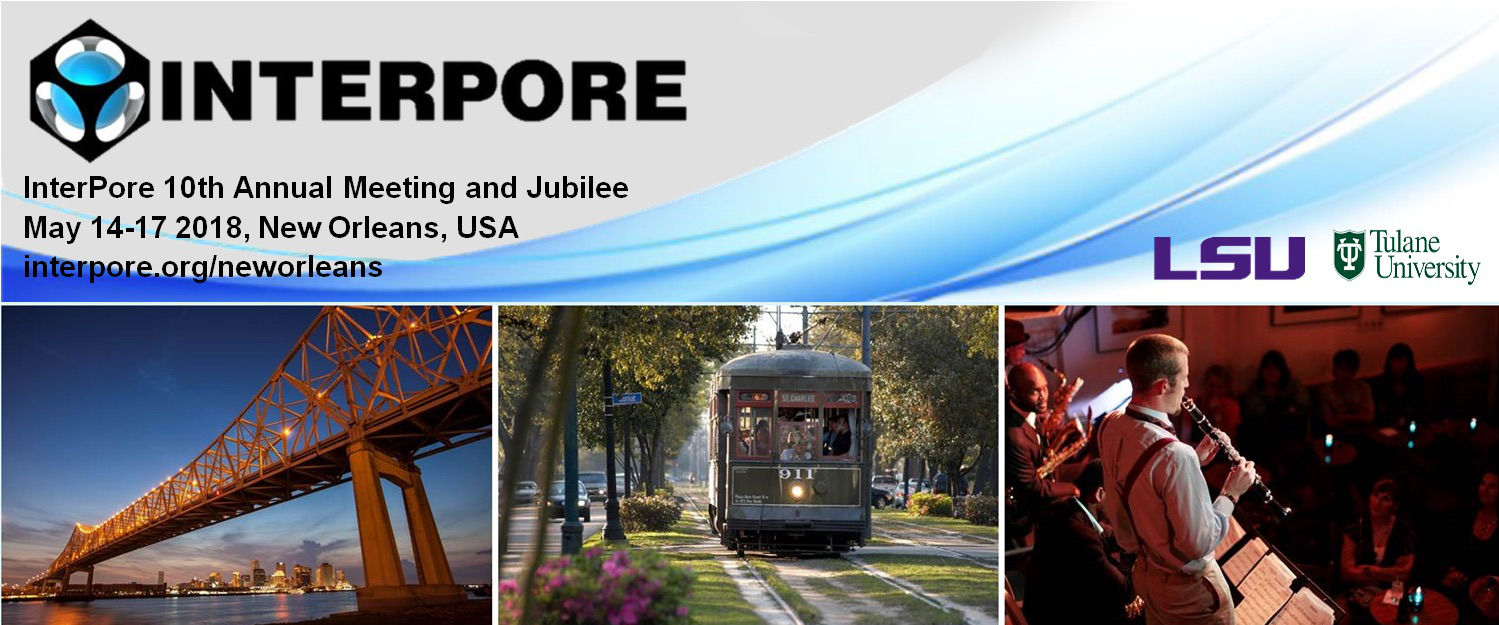Speaker
Description
We present a reactive fluid dynamics modelling approach coupling flow physics and geochemical calculations at pore scale resolution. A model workflow combining numerical solvers has been developed according to the operator splitting approach and the Lagrangian transport method. The FlowDict module of the GeoDict software package (Math2Market GmbH, Germany) iteratively computes the flow field of a given three dimensional porous geometry by applying the Navier Stokes-Brinkman LIR solver (Linden et al., 2015). The AddiDict module simulates the advective and diffusive motion of virtual particles. These particles carry aqueous solutions, which mix with pore fluid solutions and react once bouncing at surfaces resulting in dissolution and/or precipitation of mineral phases at the sub-voxel scale. Kinetically controlled geochemical equilibrium calculations are performed by the C++ library of the open-source code PHREEQC (USGS). In addition, it is planned to implement Reaktoro (Leal et al., 2017) in order to further increase the possibilities and performance of the existing geochemical workflow. Our code embeds the prior mentioned modules into a time loop for sequentially simulating pore-scale reactive transport at changing solid matrix volume. GeoDict control and data files are automatically accessed to communicate the processed geochemical data. Multiple MPI-processes and OpenMP threads are applied to provide an efficient performance of the C++ reactive transport code.
In a µCT sandstone structure, kinetic dissolution of calcite pore cements is simulated. Therefore, an inflowing acidic solution continuously replaces the equilibrium pore fluid triggering dissolution reactions at calcite surfaces. Results show effects of local pore space alterations on the continuously changing hydromechanical transport parameters calculated according to the Digital Rock Physics concept.
References
Leal, A.M.M., Kulik, D.A., Smith, W.R., Saar, M.O. (2017). An overview of computational methods for chemical equilibrium and kinetic calculations for geochemical and reactive transport modeling. Pure and Applied Chemistry, 89(5), 597–643
Linden, S., Wiegmann, A., Hagen, H. (2015). The LIR space partitioning system applied to the Stokes equations. Graph. Models 82, 58–66.
| Acceptance of Terms and Conditions | Click here to agree |
|---|


